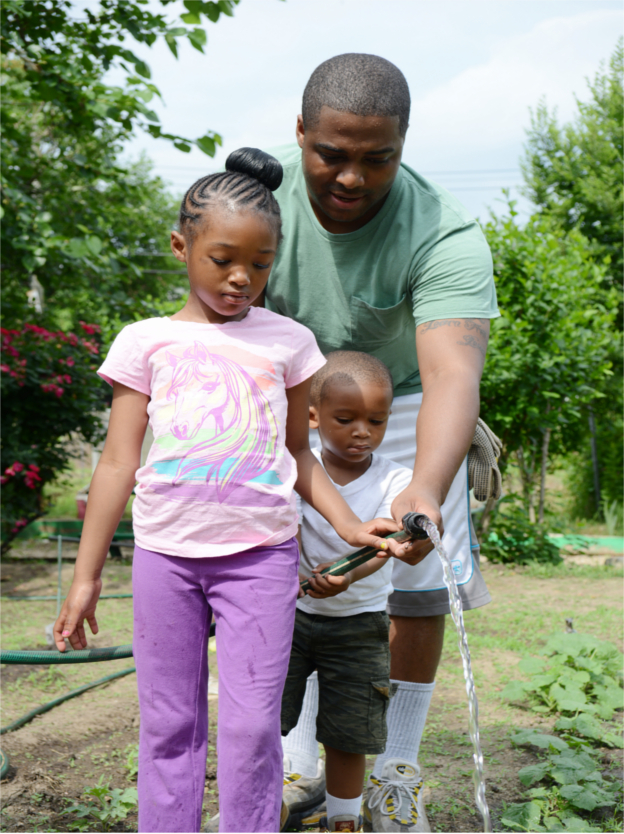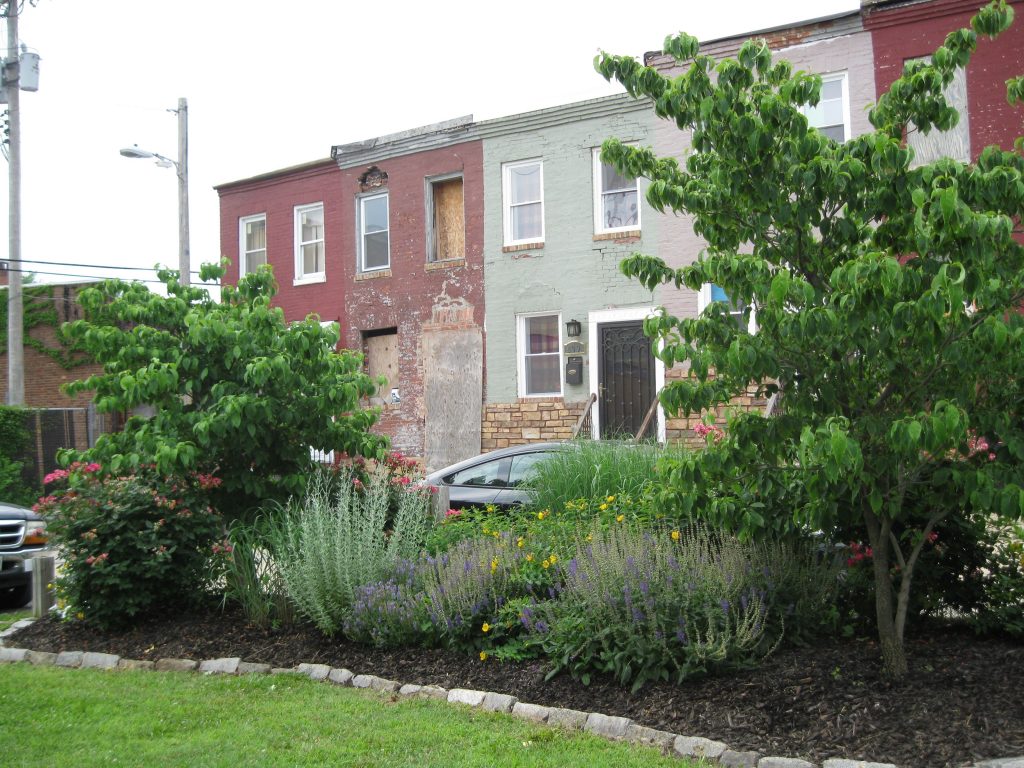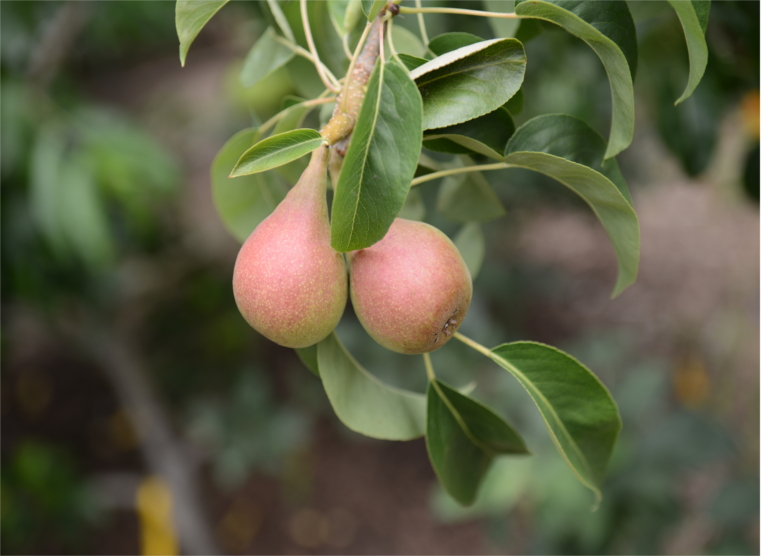- ABOUT US
- WHAT WE DO
- SPACES SERVED
Overview and map
of all spaces - RESOURCES
- GET INVOLVED
- ABOUT US
- WHAT WE DO
- SPACES SERVED
Overview and map
of all spaces - RESOURCES
- GET INVOLVED
- DONATE
Overview and map
of all spaces
Overview and map
of all spaces
Just off the busy intersection at North and Greenmount Avenues is Brentwood Commons, a peaceful park with trees, grass, and flowering shrubs. Since this tiny space was created from the ruins of an abandoned garage, all the alley houses facing it have been rehabbed or purchased for rehab.
In West Baltimore just south of Hanlon Park is the Victorine Q. Adams Organic Garden, a vegetable garden with a large grassy area where each summer the block club hosts 200 residents and guests for an annual barbecue. Not long ago, the garden was an untended, weed-filled lot, just a right-of-way for sewer pipes. Now it is a magnet that creates community, provides fresh vegetables, and teaches gardening to foster children.
Spaces like these enhance neighborhoods throughout Baltimore, but until now the tax code treated them differently from city-run parks. The great news is that in June 2016, City Council passed legislation that provides for a tax exemption for community-managed open spaces owned by land trusts like Baltimore Green Space.

As everybody knows, Baltimore has no lack of vacant lots – about 15,000 – and many of them are a drag on their neighborhoods. The good news is that throughout the city – and especially where the vacants lie heaviest – residents have created more than 200 green spaces on about 900 lots. In these spaces residents take their neighborhoods’ well-being into their own hands.
How so? For starters, a recent study from Youngstown, Ohio, showed that community-managed open spaces reduce assaults – and not just by pushing them elsewhere. Here in Baltimore, the Memory Garden, at the corner of Carey and Mosher Streets, was planted on a corner that had seen too many shootings. There have been no shootings since.
Community-managed open spaces, including the forest patches that dot the outer areas of the city, provide precious access to nature. A large body of research has established that people with access to a little bit of nature – or even a view – are healthier than people who have no access. A Johns Hopkins University study showed that the areas of Baltimore with the greatest poverty are also those with the highest incidence of cardiovascular disease and stroke. These are also the areas with the least green surroundings – and in such neighborhoods, grass-roots greening is important self-care.

Community gardens, pocket parks, and forest patches are places where adults and children can get their hands dirty caring for plants. Consider Springfield Woods, a 2.5-acre forest patch bordering Wilson Park. Now that much of it has been reclaimed from ivy and other invasive plants, and paths have been created, children once again explore the woods.
And what about the fiscal impact? It turns out that when residents and would-be residents see community gardens and pocket parks instead of vacant lots, they intuitively understand that they are in a livelier, healthier, safer neighborhood. For example, a study in Philadelphia showed that even one or two vacant lots on a block depresses housing values. Community-managed open spaces turn that around.
You can see this on the ground in Baltimore: A contractor decided to take a chance on rehabbing houses near Hollins Market after he saw chickens in the Mount Clare Street Community Garden. The manager of the apartment building across from Whitelock Community Farm in Reservoir Hill finds the green space a draw for tenants. And then, of course, there are the rehabbed houses facing Brentwood Commons.
Baltimore’s community-managed open spaces deserve the same kind of land security as our parks. Baltimore Green Space provides that security for nine community gardens and other green spaces – and until today, the threat of an increasing tax bill limited how many spaces we could protect. We at Baltimore Green Space have been working for years on this issue from a number of different angles.
First, state legislation enabling the exemption was passed in 2014, with some behind-the-scenes work from our board and partners.
Next, a Baltimore City ordinance was needed. We helped City agencies understand the benefits of community-managed open spaces, and then worked with them on language to allay their concerns that developers could take advantage of the exemption. Councilmember Mary Pat Clarke championed the bill, along with 12 co-sponsors. City Council passed the legislation in June – and we are delighted that Mayor Rawlings Blake has signed the bill. It is with great pleasure that we report to you this stride in land security! Thanks to everyone who worked to make it happen and to the green spaces that provide us all with so much benefit.
To learn about preservation for your site, call us at 813-530-8166, or write to us [email protected].

Be the first to hear about exciting events, news, and opportunities.
[email protected]
(813) 530-8166
2100 Liberty Heights Avenue
Baltimore MD 21217
Facebook | Instagram | Twitter